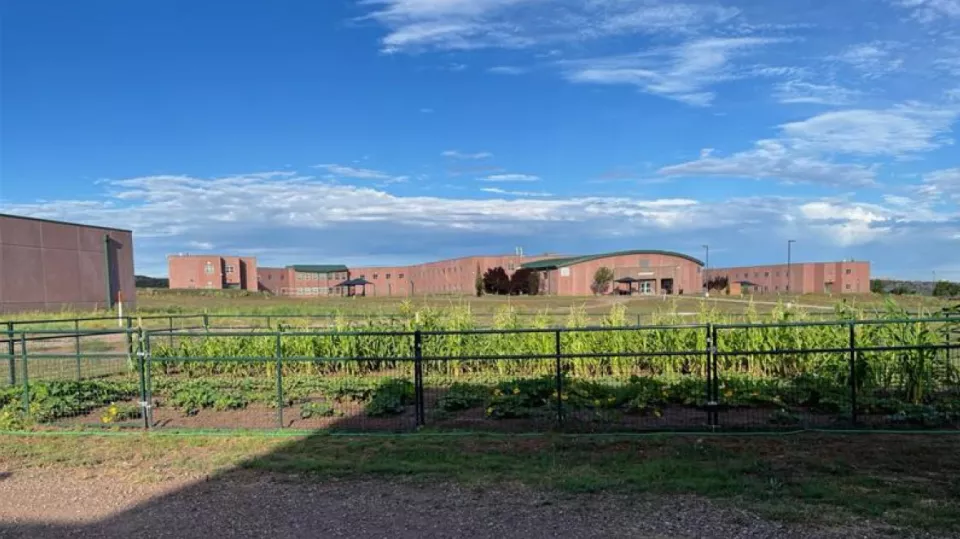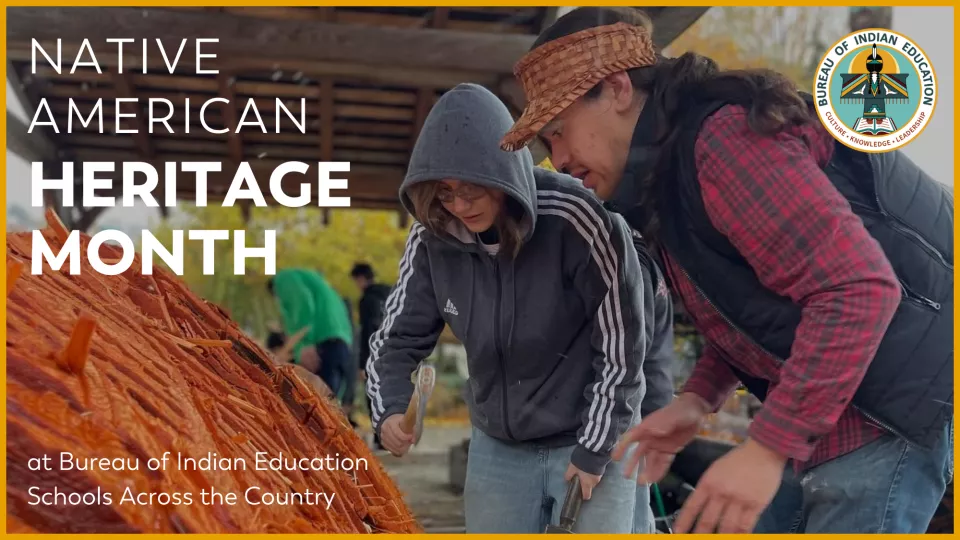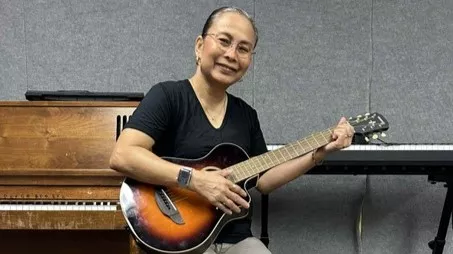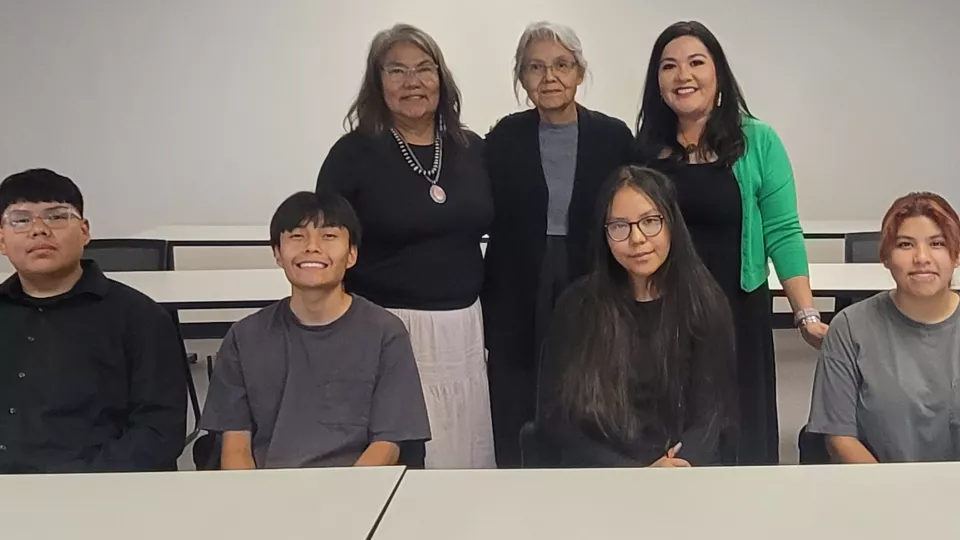
By: BIE National Nutrition Consultant U.S. Public Health Service Commissioned Corps Lt. Cmdr. Casey Cavanaugh
In 2022, the Department of Interior, Bureau of Indian Affairs and Bureau of Indian Education created Indigenous Food Hubs across the country, including four BIE operated schools. The sites will help source Indigenous foods, enhance nutrition education with a focus on cultural practices, and implement training on healthy and culturally appropriate food preparation.
In early September, just before fall, I had the opportunity to visit Wingate High School. The visit kicked off a partnership with the Native American Agriculture Fund and the Tribal Agriculture Fellowship, aimed at developing Tribal-specific agriculture lessons that honor Indigenous practices and knowledge.
During my time there, the kitchen staff prepared meals featuring traditional foods. The centerpiece was a hearty lamb stew, rich with vegetables harvested from the school garden, including Navajo squash and corn. Accompanying the stew were homemade tortillas, grilled to perfection outdoors, and a delightful sumac berry pudding that captured the essence of the season.
The other traditional lunch served was shredded bison nachos. The bison was slow-cooked, and the hearty and flavorful meat brought home the meal. As I stood in line waiting for the bison nachos, I talked to the students around me and asked if they had tried buffalo. They said they hadn’t and were excited to try the bison nachos on their tray!
The cook staff also prepared a traditional blue corn pancake-like bread, accompanied by sumac jelly and blue corn cinnamon rolls. These delicious offerings were served alongside traditional Navajo tea, creating a warm and inviting atmosphere as the staff and partners brainstormed ideas for integrating more traditional agricultural practices into the school’s curriculum.
Nadine Peterson, the head cook at Wingate, shared the fascinating story behind the sumac berries. She and two other staff members journeyed two hours north to harvest the wild treasures, spending five hours picking the berries. After returning, they washed, ground, and strained them, turning the vibrant juice into a delicious pudding with ground yellow corn topped with piñon nuts. Nadine's dedication to sourcing these ingredients and the labor involved in creating such a dish speaks volumes about the care and love the staff pour into creating these traditional Indigenous foods and recipes for their students.
This visit reinforced the importance of connecting students with their cultural heritage through food and agriculture. As we discussed the partnership, I could see the staff's excitement about developing lessons that not only teach agricultural practices but also celebrate the stories and traditions behind the foods.
The love for community and tradition was palpable, and it reminded me that each meal shared is an opportunity to educate and inspire the next generation. I look forward to continuing this journey to create a bridge between traditional knowledge and modern education that nourishes both body and spirit.
Contact
Office of Communications
Bureau of Indian Education Central Office
U.S. Department of the Interior
1849 C Street NW, MIB-3610
Washington, DC 20240
Telephone: 202-941-0789
Email: biecommunications@bie.edu





